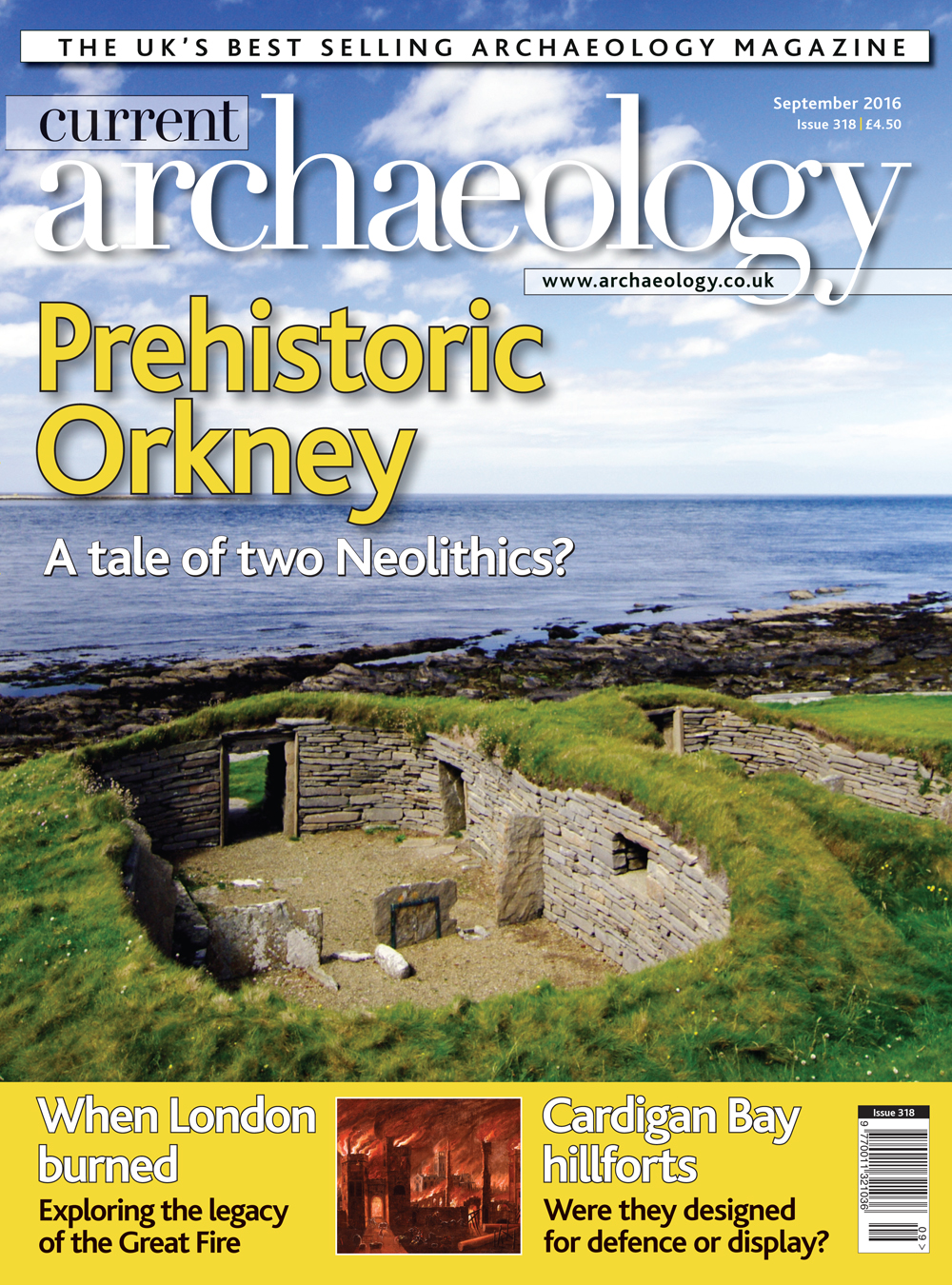Neolithic tombs are often seen as ‘houses for the dead’. Striking similarities between the residences of the living and repositories for the deceased have long suggested a symbolic link, but could it be the other way round? Evidence from Orkney suggests that the departed were being laid to rest in their cairns for about 300 years before homes began to mimic their design. What can these ‘tombs for the living’ tell us?
A crucial question for understanding hillforts is ‘what were the defences really for’? These imposing monuments are renowned for the serried ranks of ramparts that often tower over their entrances. Any attacking force that took the time to scout out the rear of the Cardigan Bay hillforts, though, might well discover far weaker defences or more vulnerable entrances. So who were their occupants trying to impress?
Rumour had it in 1666 that the Great Fire of London was kindled to prepare the way for an invasion. Although reports of foreign soldiers pouring into the capital proved to be false, a Frenchman ended up taking responsibility for the inferno. As a new exhibition opens at the Museum of London, we examine the myths and mysteries surrounding this epochal event.
Finally, the hunt for the long-lost design of a Victorian guard’s wagon led investigators to a derelict chalet wreathed by woodland. What followed may be the first archaeological excavation ever mounted on a railway carriage!
Matt Symonds
IN THIS ISSUE:/n
FEATURES/n
COMMANDING THE LANDSCAPE/n
The hillforts of Cardigan Bay
The mid Wales landscape is home to more than 100 atypical hillforts. How werethese unusual monuments built? And what was their purpose – defence or display?
FIRE! FIRE!/n
How London burned in 1666
To mark 350 years since fire broke out in Pudding Lane, the Museum of Londonis staging a major exhibition examining how events unfolded. What light can thearchaeological evidence shed on the historical accounts of those infernal days?
A VICTORIAN MISSING LINK/n
Excavating the Rudyard Lake brake coach
We take a look at how the discovery of a vandalised holiday chalet is helping alocal railway charity get an accessible heritage train on the tracks.
A TALE OF TWO NEOLITHICS?/n
Investigating the evolution of house societies in Orkney
What do the findings from the Cuween-Wideford Landscape Project reveal aboutthe Orcadian Neolithic? Was there an abrupt break between distinct ‘early’ and ‘late’phases or a gentler transition between the two?
OF MOUSERS AND MEN/n
Exploring the archaeology of the domestic cat
Today, cats are one of the world’s most popular pets, but how and when did thesepest-control experts first become beloved members of the household?
NEWS/n
Rare Roman belt buckle found in Leicester burial; Site of KingHarold’s 1066 death relocated; Roman signals at Whirlow HallFarm; Neolithic figurine rediscovered in Orkney; Extending the Roman frontier at Ipplepen;Vindolanda yields barrel of finds; Cannonball finds shoot for Pontefract’s past; Recording theFormby footprints; Scotland’s earliest known farming; Darwin’s bedroom restored
REGULARS/n
Context
The Mound in the Dark Grove
Bryn Celli Ddu, Anglesey
Conference
With Hadrian’s Wall: 40 yearsof frontier research just aroundthe corner, this special sectionbrings you the latest details onour specialist speakers, timings,and how to book
Reviews
The Later Prehistory ofNorth-West Europe; The Celts;Creating Material Worlds
Featured review
Bearsden: A Roman fort on theAntonine Wall by David J Breeze
Sherds
Chris Catling’s irreverent take onheritage issues
Odd Socs
Edinburgh World Heritage

